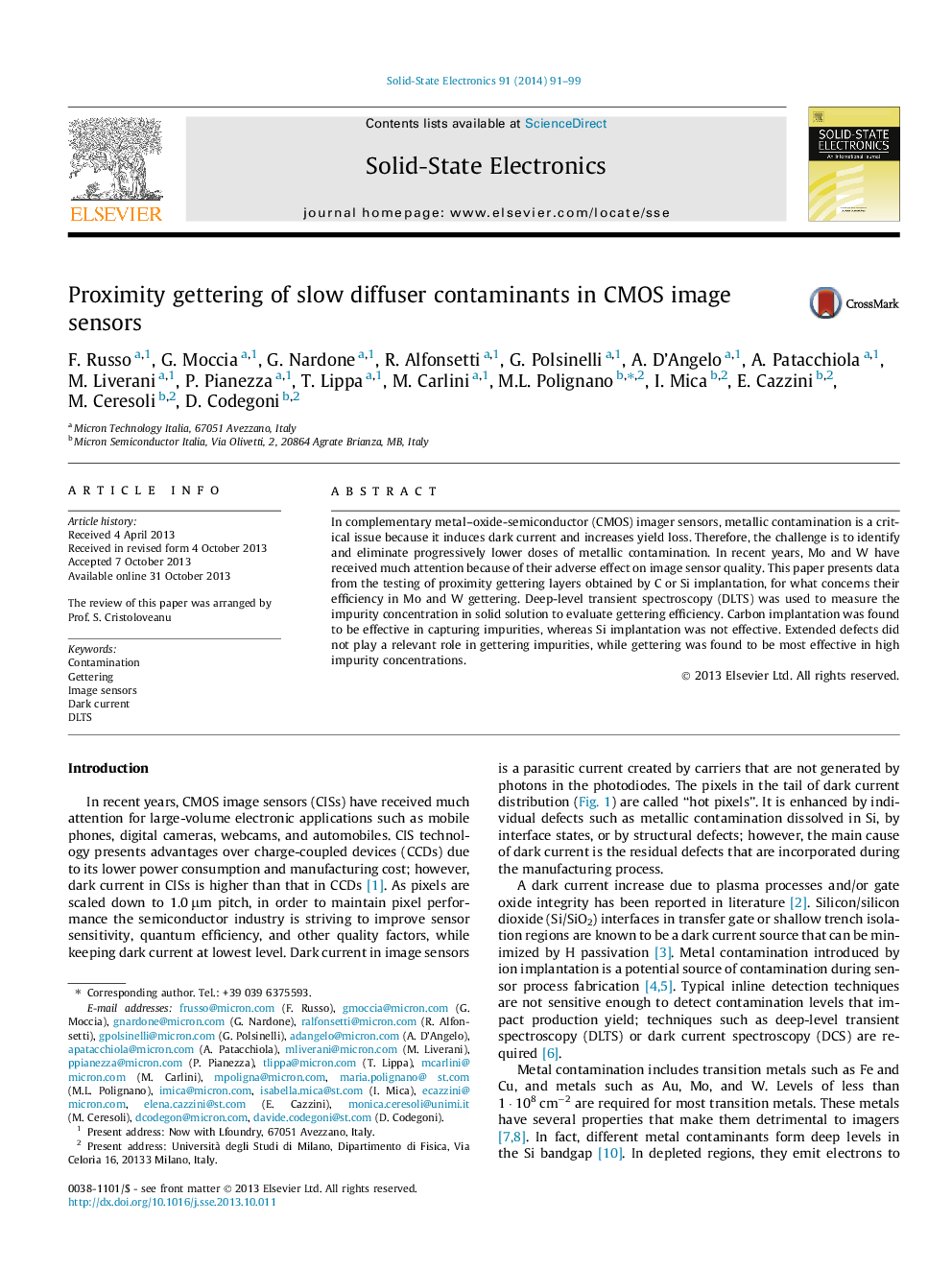| Article ID | Journal | Published Year | Pages | File Type |
|---|---|---|---|---|
| 748093 | Solid-State Electronics | 2014 | 9 Pages |
•Gettering of molybdenum and tungsten is demonstrated.•Carbon implantation is effective in gettering, silicon implantation is not.•Extended defects are ineffective in gettering. We suggest a role of tensile strain.•Gettering is limited by impurity diffusion to the gettering regions.•Improvement of image sensor devices with carbon gettering was demonstrated.
In complementary metal–oxide-semiconductor (CMOS) imager sensors, metallic contamination is a critical issue because it induces dark current and increases yield loss. Therefore, the challenge is to identify and eliminate progressively lower doses of metallic contamination. In recent years, Mo and W have received much attention because of their adverse effect on image sensor quality. This paper presents data from the testing of proximity gettering layers obtained by C or Si implantation, for what concerns their efficiency in Mo and W gettering. Deep-level transient spectroscopy (DLTS) was used to measure the impurity concentration in solid solution to evaluate gettering efficiency. Carbon implantation was found to be effective in capturing impurities, whereas Si implantation was not effective. Extended defects did not play a relevant role in gettering impurities, while gettering was found to be most effective in high impurity concentrations.
